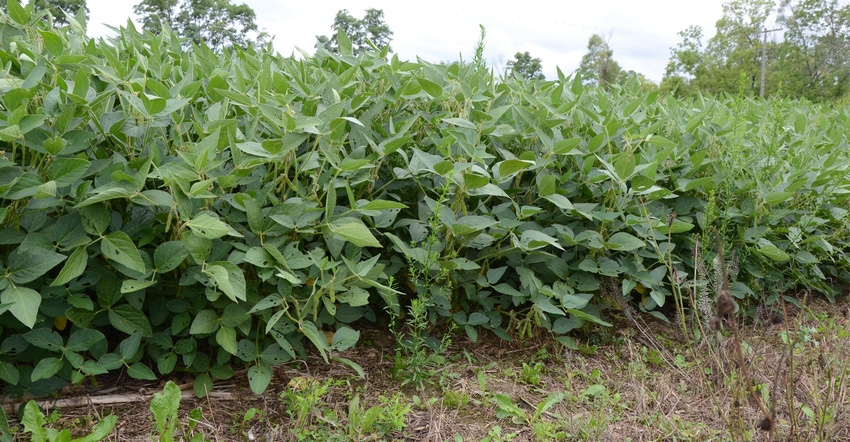September 5, 2017

Weather and management challenges during the 2017 growing season already have some in the dry bean and soybean industry looking ahead to the need for preharvest desiccant herbicides. Seed quality issues, challenging planting conditions and unprecedented precipitation in some areas have led to variable stands and inconsistent maturity across many fields.
Preharvest herbicide applications are effective tools to standardize field uniformity and ensure high-quality, consistent harvested product. However, crop maturity, preharvest intervals and application timing are all considerations in the application of a harvest aid. Herbicide applications should only be made after consulting label requirements and restrictions.
Consider the following points when selecting a product for use as a harvest aid and applying that product:
• For 2017, glyphosate, paraquat (Gramoxone or Parazone), carfentrazone-ethyl (Aim), saflufencil (Sharpen) and flumioxazin (Valor) are labeled for preharvest applications for both soybeans and dry beans. Dicamba (Clarity) is available for use only in soybeans.
• In dry beans, most products require that applications are only made after 80% of pods are yellow and no more than 40% of bush-type bean or 30% of vine-type bean leaves are still green. In soybeans, most products require that applications are conducted only after pods have lost color.
• Optimal performance is contingent on effective coverage and recommended adjuvants. Consult herbicide labels for proper application rates and pressure recommendations.
• Tankmixes are permitted with many products, though rates of individual products may need to be adjusted. Consult herbicide recommendations for necessary adjuvants and conditioners.
• Preharvest intervals vary by product and range from zero to 15 days following application. Activity of products varies depending on environmental conditions and often requires several days beyond the minimal preharvest interval timing for optimal desiccation effects. Dry beans and soybeans harvested for seed have additional preharvest herbicide application restitutions. Many products are not labeled for crops intended for seed production.
• Consider rotation restrictions. Valor has a 30-day rotation restriction and 1-inch rainfall requirement before winter wheat. Dicamba should not be used when rotating to wheat. Sharpen has a four- to five-month rotation interval, excluding the time soil is frozen, to dry beans, sugarbeets and vegetables.
• Glyphosate should be used only to control weeds that hinder harvest, not for vine desiccation. Not all glyphosate products are labeled for preharvest timings. The translocating properties of glyphosate make it possible for herbicide residues to accumulate in harvested beans if applications occur before the hard dough stage. Tankmixes with glyphosate are permitted with some products, though application rates will need to be adjusted.
No preharvest desiccant herbicide applications should be made without fully consulting and following label requirements. Application timing, use rates, seed use, feed intentions and rotation restrictions all must be closely followed. The Michigan State University Weed Control Guide lists herbicide products available to preharvest application, including rates and instructions for use.
The Michigan State University 2017 Weed Control Guide contains guidance on preharvest applications for soybeans (Table 2G) and dry beans (Table 5C). Herbicide crop rotation restrictions can be found in Table 12. MSU Weed Control research in 2016 examined in effects of preharvest herbicide applications on dry bean desiccation and weed control.
Source: Michigan Agri-Business Association
You May Also Like




